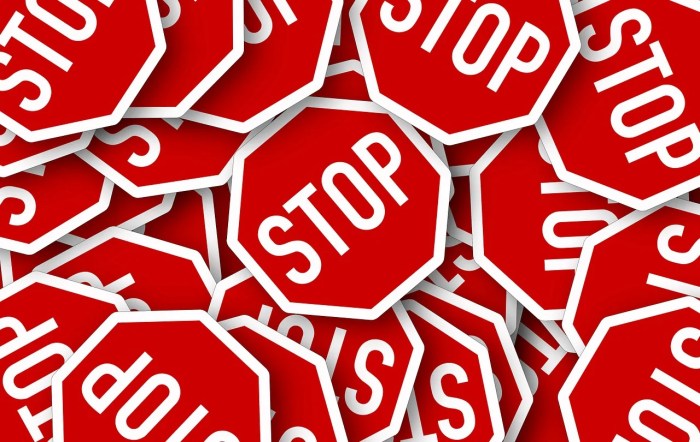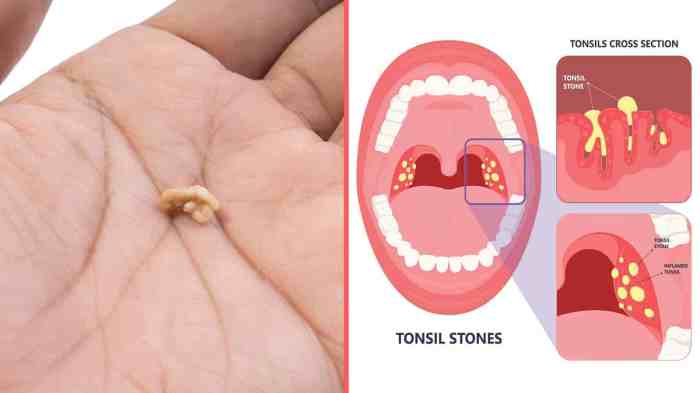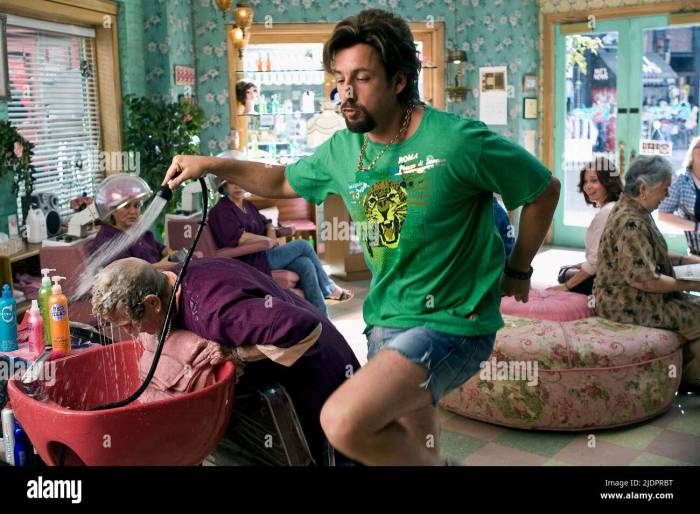How to stop bleeding gums? This comprehensive guide explores the multifaceted nature of gum bleeding, delving into its causes, effective home remedies, crucial dental hygiene practices, and professional treatments. We’ll uncover the potential triggers ranging from simple lifestyle choices to underlying health conditions, empowering you to understand and address this common oral health concern.
From identifying the root cause of your bleeding gums to implementing practical home remedies and maintaining optimal oral hygiene, this guide provides a structured approach to resolving gum bleeding. We’ll also discuss when professional help is necessary and how lifestyle choices can impact gum health. A balanced understanding of all these factors is key to effectively stopping bleeding gums.
Identifying the Causes of Bleeding Gums
Bleeding gums can be a frustrating and sometimes alarming experience. Understanding the potential causes, from mild irritations to more serious underlying conditions, is crucial for effective treatment and preventing further complications. This section delves into the various factors that can contribute to gum bleeding, categorizing them by severity and highlighting the importance of recognizing the symptoms.
Potential Causes of Bleeding Gums
Gum bleeding is often a symptom of underlying issues. These problems can range from simple, easily treatable causes to more complex conditions that necessitate professional medical attention. Identifying the root cause is vital for proper diagnosis and effective treatment.
| Cause | Symptoms | Severity |
|---|---|---|
| Poor Oral Hygiene | Plaque buildup, gingivitis (red, swollen, and bleeding gums), bad breath | Mild |
| Dental Procedures | Bleeding following scaling, root planing, or other dental work | Mild to Moderate |
| Brushing Too Hard | Gums become irritated, leading to bleeding, and possible recession | Mild |
| Dental Appliances | Irritation and bleeding from braces, retainers, or other dental appliances. | Mild to Moderate |
| Vitamin Deficiencies (e.g., Vitamin C) | Inflammation, swelling, and increased bleeding tendency. Individuals with scurvy may experience severe bleeding and poor wound healing. | Moderate |
| Hormonal Changes (e.g., Pregnancy, Menopause) | Increased sensitivity and blood vessel dilation in gums, making them more prone to bleeding | Mild to Moderate |
| Underlying Medical Conditions (e.g., Leukemia, HIV) | Frequent and severe bleeding, possibly accompanied by other systemic symptoms. | Moderate to Severe |
| Medications (e.g., Blood Thinners) | Increased tendency for bleeding, especially after brushing or flossing | Mild to Moderate |
| Trauma (e.g., Toothbrush abrasion, foreign objects) | Localized bleeding, pain, and discomfort at the site of injury | Mild |
| Periodontal Disease (Gingivitis, Periodontitis) | Red, swollen, and bleeding gums, bad breath, receding gums, pus formation, loose teeth, possible bone loss | Moderate to Severe |
Risk Factors Associated with Bleeding Gums
Several factors increase the likelihood of experiencing bleeding gums. Understanding these risk factors can help individuals take proactive steps to maintain optimal oral health.
- Lifestyle Choices: Smoking, alcohol consumption, and a diet lacking in essential nutrients like vitamin C can negatively impact gum health, making them more susceptible to inflammation and bleeding.
- Underlying Health Conditions: Certain medical conditions, such as diabetes, autoimmune diseases, and blood clotting disorders, can weaken the immune system and increase the risk of gum disease. For example, a diabetic patient may have a compromised immune system that makes them more prone to infection, potentially leading to gum inflammation and bleeding.
- Dental Hygiene Practices: Insufficient or improper brushing and flossing techniques, along with infrequent dental check-ups, can allow plaque and tartar to accumulate, leading to inflammation and bleeding. A person who fails to remove plaque effectively may experience gingivitis, which is an early stage of gum disease characterized by bleeding gums.
Physiological Processes Contributing to Gum Inflammation and Bleeding
The physiological processes involved in gum inflammation and bleeding are complex and interconnected. Plaque buildup on the teeth provides a breeding ground for bacteria, which release toxins that irritate the gums. This irritation triggers an inflammatory response, characterized by swelling, redness, and bleeding. The blood vessels in the gums become more permeable, leading to increased blood flow to the area and, consequently, the possibility of bleeding.
“A healthy immune response is crucial for fighting off these bacterial infections. When the immune system is weakened, the gums are less able to resist bacterial invasion and inflammation, increasing the likelihood of bleeding.”
Effective Home Remedies for Bleeding Gums
Bleeding gums can be a frustrating and uncomfortable experience, often a sign of underlying oral health issues. While professional dental care is crucial for addressing the root causes, several home remedies can help manage symptoms and promote gum health. These remedies are not a substitute for professional treatment but can be used as supportive measures.Many home remedies for bleeding gums aim to reduce inflammation, promote blood clotting, and improve oral hygiene.
By understanding the potential benefits and limitations of each approach, you can incorporate them into your routine in a safe and effective manner. Remember, consistency is key for any home remedy to show results.
Saltwater Rinses
Saltwater rinses are a common and effective home remedy for bleeding gums. The salt helps to reduce inflammation and kill bacteria. This method is generally considered safe and easy to implement.
- Materials: Warm water and a pinch of salt.
- Steps: Mix a pinch of salt in a glass of warm water. Swish the solution around your mouth for 30 seconds to 1 minute, focusing on the affected areas. Spit out the solution and rinse your mouth with plain water. Repeat this several times a day.
- Benefits: Saltwater can help reduce inflammation, kill bacteria, and promote a healthier oral environment. It can also help soothe any pain or discomfort associated with bleeding gums.
- Limitations: While generally safe, excessive use or prolonged rinsing can dry out the mouth, leading to discomfort. Saltwater rinses are not a cure for underlying gum disease. Consult your dentist if the bleeding persists.
Oil Pulling
Oil pulling, a traditional Ayurvedic practice, involves swishing oil in the mouth to remove bacteria and toxins. While some studies suggest potential benefits, more research is needed to confirm its efficacy.
- Materials: Coconut oil or sesame oil.
- Steps: Take a tablespoon of coconut oil or sesame oil. Swish it around your mouth for 10-20 minutes, ensuring the oil covers all areas of your mouth. Spit out the oil, and then rinse your mouth with water. Do this once or twice daily.
- Benefits: Advocates suggest that oil pulling can reduce bacteria, improve oral hygiene, and reduce inflammation. However, the evidence supporting these claims is still limited.
- Limitations: Oil pulling may not be suitable for everyone, especially those with certain medical conditions. It can also cause mouth sores or discomfort if not performed correctly. Oil pulling is not a substitute for professional dental care.
Aloe Vera Gel
Aloe vera gel, known for its soothing properties, is another potential remedy for bleeding gums. The gel can help reduce inflammation and promote healing.
- Materials: Aloe vera gel (fresh or store-bought).
- Steps: Apply a small amount of aloe vera gel directly to the affected gum areas. Gently massage the gel into the gums for a few minutes. Repeat this a few times a day.
- Benefits: Aloe vera gel’s anti-inflammatory properties may help soothe irritated gums and promote healing.
- Limitations: The efficacy of aloe vera gel for bleeding gums is not definitively proven through extensive research. Some individuals may experience allergic reactions to aloe vera. It’s crucial to consult with a doctor if you have any allergies or concerns.
Table Comparing Home Remedies
| Remedy | Instructions | Effectiveness | Potential Side Effects |
|---|---|---|---|
| Saltwater Rinse | Mix salt in warm water and rinse. | Generally effective for reducing inflammation and killing bacteria. | Can dry out the mouth if used excessively. |
| Oil Pulling | Swish oil in the mouth for 10-20 minutes. | Limited evidence of effectiveness; may help with oral hygiene. | Potential for mouth sores or discomfort. |
| Aloe Vera Gel | Apply aloe vera gel directly to gums. | May help with inflammation and healing, but needs more research. | Potential for allergic reactions. |
Dental Hygiene Practices for Preventing Bleeding Gums
Taking proactive steps to maintain good oral hygiene is crucial for preventing bleeding gums and promoting overall oral health. A consistent routine of brushing, flossing, and regular dental checkups significantly reduces the risk of gum disease, leading to a healthier, more confident smile. Preventing bleeding gums isn’t just about aesthetics; it’s a vital step in maintaining the health of your teeth and gums.
Proper Brushing Techniques and Frequency, How to stop bleeding gums
Brushing your teeth effectively and frequently is fundamental to preventing gum disease. The mechanical action of brushing disrupts the biofilm, also known as plaque, that builds up on teeth and gums. Plaque is a sticky film containing bacteria, and if not removed, it can lead to inflammation and bleeding gums.Regular brushing, coupled with proper technique, is key to maintaining gum health.
Brushing twice daily for two minutes each time is generally recommended. This allows sufficient time to reach all surfaces of the teeth, removing plaque and food particles. Using a soft-bristled toothbrush is crucial to avoid damaging the gums.
Taking care of those pesky bleeding gums can be tricky, but it’s definitely manageable. One key factor is good oral hygiene, and remember that hydration is super important. If you’re an athlete, though, you might also be dealing with another common issue: runner’s diarrhea. Luckily, understanding how to prevent runners diarrhea can help you keep your digestive system in check, which in turn can help with overall gum health.
Check out this helpful guide for tips on how to prevent runners diarrhea and see how it all connects! Ultimately, proper diet and a consistent oral care routine are the best bets for healthy gums.
Step-by-Step Guide to Brushing
- Wet your toothbrush with water.
- Apply a pea-sized amount of fluoride toothpaste.
- Hold the brush at a 45-degree angle to the gums.
- Gently brush back and forth in short, gentle strokes, focusing on the gumline. Avoid scrubbing vigorously, as this can irritate the gums and cause further damage.
- Brush all surfaces of your teeth, including the outer, inner, and chewing surfaces.
- Use gentle circular motions to clean the chewing surfaces of your molars.
- Brush your tongue to remove bacteria and freshen your breath.
- Rinse your mouth thoroughly with water after brushing.
Correct Flossing Method
Flossing complements brushing by reaching the spaces between teeth where a toothbrush can’t effectively clean. Food particles and plaque accumulate in these areas, contributing to gum inflammation and disease. Proper flossing is essential for maintaining healthy gums and preventing cavities.The technique involves carefully inserting the floss between your teeth, gently sliding it up and down along the side of each tooth.
Avoid snapping the floss, as this can damage the gums. Be sure to use a clean section of floss for each tooth.
Importance of Regular Dental Checkups and Professional Cleanings
Regular dental checkups and professional cleanings are vital components of a comprehensive oral hygiene plan. A dentist can detect early signs of gum disease, even before they become noticeable, and provide professional cleanings to remove plaque and tartar buildup that brushing and flossing might miss.Professional cleanings are important for removing hardened plaque (tartar), which is difficult to remove at home.
Tartar buildup can irritate the gums and lead to more severe gum disease. Early detection and intervention by a dental professional can prevent the progression of gum disease and its potential complications.
Stopping bleeding gums often involves simple things like brushing and flossing regularly. However, did you know that sometimes, tension in the jaw muscles can contribute to gum inflammation? Techniques like self myofascial release techniques can help alleviate this tension, potentially reducing the inflammation and, in turn, the bleeding. So, while good oral hygiene is key, consider incorporating these gentle release methods for a holistic approach to stopping bleeding gums.
Professional Treatments for Severe Gum Bleeding: How To Stop Bleeding Gums

Severe gum bleeding, if left untreated, can lead to significant oral health problems, including tooth loss. Fortunately, various professional treatments are available to address the underlying causes and restore gum health. These interventions, often recommended by dentists or periodontists, range from scaling and root planing to more complex surgical procedures. Understanding these options is crucial for making informed decisions about your oral care.Professional treatments for severe gum bleeding target the root causes, addressing infections, inflammation, and bone loss.
By addressing these issues, these procedures aim to halt the progression of gum disease and protect the health of your teeth and supporting structures.
So, you’ve got those pesky bleeding gums? First, try some gentle brushing, focusing on the affected areas. And, while we’re on the topic of oral health, it’s important to know that certain STIs, like gonorrhea, can manifest in various ways, including in the mouth. If you’re concerned about potential symptoms, learning more about what does gonorrhea look like can help you understand the differences between normal oral health issues and something more serious.
For bleeding gums, a good diet and regular dental checkups are key for preventing future issues.
Scaling and Root Planing
Scaling and root planing is a common and effective treatment for gum disease. This non-surgical procedure involves deep cleaning of the teeth and roots. Dental professionals use specialized instruments to remove plaque, tartar, and bacteria from the affected areas. The process involves two distinct steps. First, the tartar and plaque buildup above and below the gum line are removed.
Next, the root surfaces are smoothed to prevent bacteria from re-accumulating. The procedure typically involves local anesthetic to ensure patient comfort.
Gum Surgery
In cases of advanced gum disease where scaling and root planing is insufficient, gum surgery might be necessary. Gum surgery aims to correct significant gum recession, repair damaged tissues, and promote healthier gum attachment to the teeth. Various surgical techniques exist, including flap surgery, guided tissue regeneration, and bone grafting. These procedures often involve repositioning gum tissue, removing diseased tissue, and sometimes adding bone or tissue grafts to support the teeth.
Recovery time varies based on the extent of the procedure.
Comparison of Treatments
| Treatment | Procedure | Recovery Time | Pros | Cons |
|---|---|---|---|---|
| Scaling and Root Planing | Deep cleaning of teeth and roots, removing plaque and tartar. | Generally, 1-2 weeks with minimal discomfort. | Effective in early stages of gum disease, less invasive, relatively quick recovery. | May not be sufficient for advanced cases, requires regular follow-up for maintenance. |
| Gum Surgery | Repositioning gum tissue, removing diseased tissue, possibly adding bone or tissue grafts. | Several weeks to several months, depending on the extent of the procedure and individual healing. | Addresses advanced gum disease, restores gum health and aesthetics, often halting progression of disease. | More invasive, longer recovery period, potential for complications (infection, swelling, pain). Requires careful post-operative care. |
Dietary Recommendations for Healthy Gums
A healthy diet plays a vital role in maintaining overall well-being, and this extends to the health of your gums. Proper nutrition provides the essential vitamins and minerals needed for strong, resilient gum tissue, reducing the risk of bleeding gums and other oral health issues. A balanced intake of various nutrients is key to supporting healthy gum tissue.A balanced diet rich in essential nutrients is crucial for maintaining healthy gums.
This includes a wide variety of fruits, vegetables, lean proteins, and whole grains. Avoiding excessive sugar intake and focusing on foods that support collagen production and overall gum health is essential. Specific dietary components significantly influence the health of gum tissue.
Foods Rich in Vitamins and Minerals for Gum Health
Proper nutrition is paramount for supporting gum health. Nutrients like vitamin C, vitamin K, and certain minerals are vital for maintaining the integrity of gum tissue. These nutrients contribute to collagen production, a key component in healthy gums. The following vitamins and minerals are essential for strong gums and overall oral health.
- Vitamin C: Crucial for collagen synthesis, vitamin C is an antioxidant that helps protect gum tissue from damage. Citrus fruits, berries, and leafy green vegetables are excellent sources. A deficiency in vitamin C can weaken the gums, making them more susceptible to bleeding.
- Vitamin K: Plays a role in blood clotting and supporting gum tissue health. Leafy greens like spinach and kale are good sources of vitamin K. A balanced intake of vitamin K is essential for proper blood clotting, reducing inflammation, and promoting healthy gums.
- Zinc: Important for wound healing and immune function. Oysters, beef, and pumpkin seeds are excellent sources. Zinc deficiency can negatively affect the body’s ability to fight infection, impacting gum health.
- Iron: Essential for oxygen transport throughout the body. Red meat, beans, and leafy greens are good sources of iron. Iron deficiency can lead to anemia, which may exacerbate gum inflammation and bleeding.
Impact of Dietary Components on Gum Health
Certain dietary components can either support or hinder gum health. Understanding the influence of these components is crucial for maintaining healthy gums.
- Sugar: Excessive sugar intake can lead to increased bacterial growth in the mouth, creating an environment conducive to gum disease. This can result in inflammation and bleeding gums. Limiting sugary foods and drinks can help maintain a healthier oral environment.
- Processed Foods: Often low in essential nutrients and high in sugar and unhealthy fats, processed foods contribute to inflammation throughout the body, including in the gums. Reducing consumption of these foods and focusing on whole foods can contribute to better gum health.
- Vitamin C: Crucial for collagen production, which strengthens gum tissue and helps resist damage. A lack of vitamin C can lead to weakened gums and increased susceptibility to bleeding. Adequate vitamin C intake is essential for gum health.
Foods That Promote Gum Health
Including a variety of foods in your diet is essential for overall health and well-being. Consuming foods rich in essential vitamins and minerals contributes to stronger, healthier gums.
- Citrus fruits: Excellent sources of vitamin C, citrus fruits like oranges, lemons, and grapefruits contribute to collagen production and overall gum health.
- Leafy green vegetables: Spinach, kale, and other leafy greens provide vitamin K, which is essential for blood clotting and gum tissue health.
- Berries: Rich in antioxidants and vitamin C, berries contribute to overall gum health.
- Red meat: Provides iron, a mineral essential for oxygen transport and gum health.
- Beans and lentils: Good sources of iron and other essential nutrients that support gum health.
- Whole grains: Offer fiber and other nutrients beneficial for overall health, including gum health.
- Yogurt: Contains probiotics that can contribute to a healthier oral microbiome, reducing the risk of gum disease.
Lifestyle Factors Influencing Gum Health
Our oral health isn’t just about brushing and flossing; a holistic approach encompassing lifestyle choices plays a significant role in gum health. Stress, smoking, and sleep quality are powerful factors that can impact the delicate balance within the mouth, affecting gum tissues and potentially leading to inflammation and bleeding. Understanding these influences allows us to make informed decisions to protect our gums and overall oral well-being.Lifestyle factors like stress, smoking, and sleep quality are intricately connected to the health of our gums.
Chronic stress can compromise the immune system’s ability to fight off infections, making the gums more susceptible to inflammation. Smoking, a well-known risk factor, damages blood vessels and reduces blood flow to the gums, hindering their ability to heal and fight off infection. Poor sleep quality can also contribute to inflammation and weaken the body’s natural defense mechanisms, making it easier for gum disease to develop.
Stress and Gum Health
Chronic stress significantly impacts the body’s immune response. When stress levels are high, the body releases hormones that can hinder the immune system’s ability to fight off infection and inflammation. This can weaken the gums’ natural defenses, increasing their vulnerability to irritation and disease. Managing stress through relaxation techniques like meditation, yoga, or deep breathing can help to mitigate these negative effects on gum health.
Regular exercise and maintaining a healthy diet are also important strategies for stress management.
Smoking and Gum Disease
Smoking is a major contributor to gum disease. The chemicals in cigarettes damage blood vessels, reducing blood flow to the gums and hindering their ability to heal. This decreased blood flow makes the gums more susceptible to infection and inflammation. Furthermore, smoking weakens the immune system, making it harder for the body to fight off bacterial infections that contribute to gum disease.
Quitting smoking is crucial for improving gum health and overall well-being.
Sleep Quality and Gum Health
Adequate sleep is essential for overall health, including gum health. During sleep, the body repairs and regenerates tissues, including the gums. Poor sleep quality can disrupt this process, potentially leading to inflammation and making the gums more vulnerable to infection. A consistent sleep schedule, promoting a healthy sleep environment, and practicing good sleep hygiene can improve sleep quality and positively impact gum health.
Aiming for 7-9 hours of quality sleep per night is generally recommended.
Comparison of Lifestyle Choices
Different lifestyle choices have varying degrees of impact on gum health. While stress can weaken the immune system and increase susceptibility to inflammation, smoking directly damages blood vessels and hinders healing. Poor sleep quality can also contribute to inflammation, although it might not have the same direct negative effect as smoking. Addressing all these factors, where possible, will have a positive impact on maintaining healthy gums.
Recognizing When to Seek Professional Help
Bleeding gums, while often manageable with home remedies and good oral hygiene, can sometimes signal a more serious underlying issue. Ignoring persistent or worsening gum bleeding can lead to significant oral health problems. Understanding the warning signs and knowing when to seek professional dental intervention is crucial for maintaining a healthy smile and overall well-being.Persistent gum bleeding, especially when accompanied by other symptoms, warrants a visit to the dentist.
This isn’t just about aesthetics; it’s about safeguarding your oral health and potentially preventing more extensive damage. Early detection and treatment are key to effectively managing gum disease and its potential complications.
Warning Signs Requiring Immediate Dental Consultation
Knowing when to seek professional help is critical. A few warning signs may indicate a more serious condition that requires professional intervention.
- Bleeding gums that persist despite diligent oral hygiene practices, including brushing and flossing.
- Swollen, tender, or red gums, especially when accompanied by a persistent bad taste or odor.
- Receding gums, where the gum line pulls back, exposing more of the tooth root.
- Pus or discharge from the gums.
- Pain or discomfort in the gums or jaw, particularly if accompanied by fever or other systemic symptoms.
- Loose teeth.
- Changes in the fit of your dentures.
- Difficulty chewing or swallowing.
- Persistent bad breath (halitosis) that isn’t relieved by oral hygiene.
Potential Complications of Untreated Gum Bleeding
Untreated gum bleeding can lead to several serious complications, affecting not just your mouth but potentially your overall health. Prolonged and severe gum disease can negatively impact your quality of life.
- Periodontitis: This advanced gum disease destroys the tissues and bone that support your teeth, leading to tooth loss. Think of it as a gradual erosion of the foundation holding your teeth in place. In severe cases, teeth may become loose or fall out entirely.
- Systemic health issues: Studies suggest a link between gum disease and other health problems, including heart disease, stroke, and respiratory issues. Inflammation in the gums can potentially affect the rest of the body.
- Increased risk of infections: Compromised gums are more vulnerable to infections, potentially spreading to other parts of the body. This is particularly important for people with weakened immune systems.
- Bone loss: Periodontitis weakens the bones that hold your teeth in place. This loss of bone can result in teeth becoming loose and eventually needing extraction.
Last Recap
In conclusion, stopping bleeding gums requires a multifaceted approach that addresses both the immediate issue and the underlying causes. By understanding the various factors that contribute to gum inflammation, you can develop a personalized strategy that combines effective home remedies, meticulous oral hygiene, and professional treatments. Remember, consistency and a commitment to overall oral health are key to preventing future issues and maintaining healthy gums.
The journey to healthy gums begins with knowledge and proactive care.







